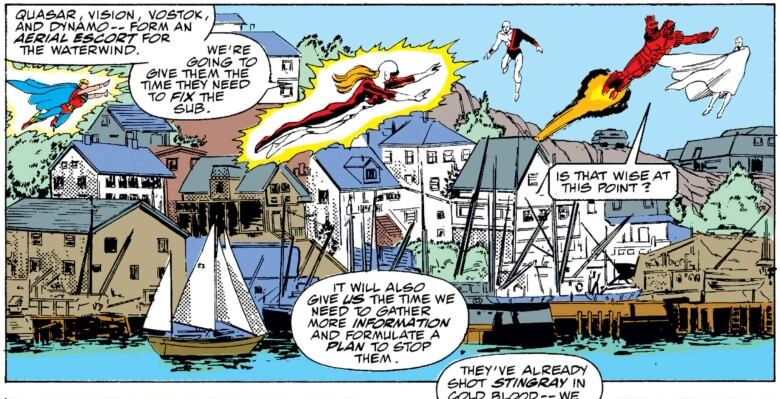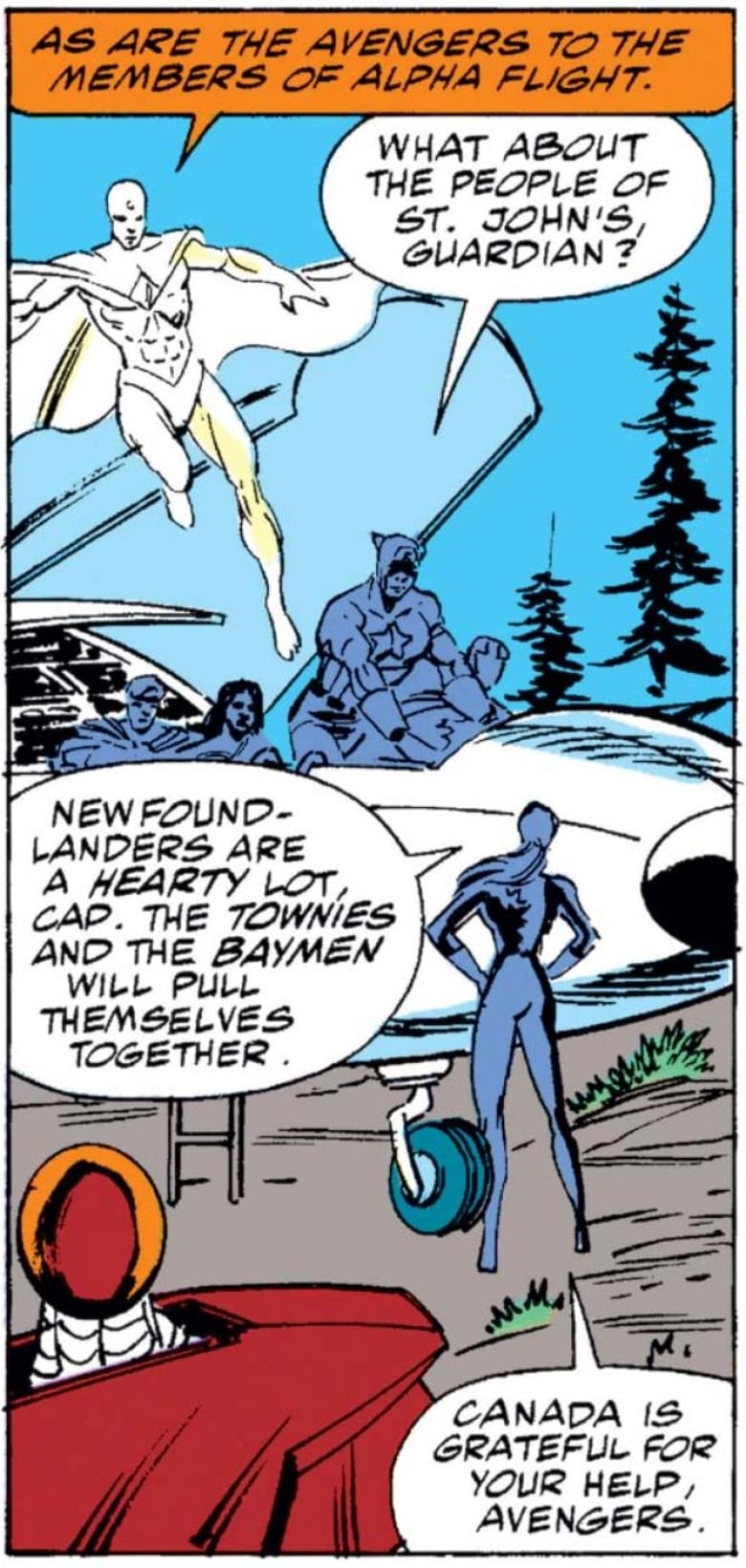That time the Avengers destroyed St. John's
Before they were movie stars, Marvel’s heroes stopped by Newfoundland with an atomic bomb. It didn’t go well.

Strolling down Water Street doing some window shopping, enjoying the thriving live local music scene, dining out or just passing through. To the casual eye, St. John's might seem like a city rich in history, ebbing and flowing with the economic tide, but continuing. Alive and growing.
One might never suspect that a mere 30 years ago, this bustling metropolis was reduced to a crater of smoke, mud, and irradiated ash.
How could a city once known for its jellybean houses and equally colourful local culture have fallen on such ruin? Well, blame America.
Captain America.

Earth's mightiest heroes
The city's end is detailed in the Marvel Comics series The Avengers, starting in issue 319, published 31 years ago this summer.
"St. John's is not a city accustomed to being the center of worldwide attention," it says, "nor is it prepared to be known throughout history as the place where World War III began!" I mean, who would be?
The story The Crossing Line was primarily the creation of writer Fabian Nicieza, co-creator of the character Deadpool. It details the search for a missing nuclear submarine, hijacked by terrorists bent on using it to destroy New York, but after a brief skirmish with some superheroes, some robots, and some fishmen, they settle for St. John's instead.

Nicieza had been writing Alpha Flight, a book about Canadian superheroes, when he was asked to step in on short notice, after the departure of writer and artist John Byrne, to do a story for The Avengers. He told the CBC, "I barely remember the actual writing; it was a blur of too little time and too much work.… Our schedule was in horrific shape before we even began working on the issues."
Having recently written for a title set in Canada, Nicieza had already been doing a lot of research. So keeping it in that setting, and introducing Alpha Flight into the situation in St. John's, made sense in a pinch.
"I wanted a port city in Canada, since Atlantis would be involved, and I knew I wanted the Avengers to be out of their jurisdiction, Plus, we'd seen Atlantis invade New York a gajillion times by that point. I figured another city deserved to get trashed," he joked.
"Think of it as a pre-emptive strike to stop whatever it was you were planning. We all know that Canadians can't be trusted."
A city evacuated
Knowing about the threat of a nuclear explosion, the heroes (prudently as it turns out) evacuate the city to Port au Port, a community 770 kilometres away. Apart from an eight-hour drive back to the smoking ruins of their homes, I assume the citizens of St. John's were grateful for the save.
This is not the A-list Avengers. Captain America is there, as is the Vision, but rather than Iron Man or Thor the team is rounded out by Quasar (a soldier with alien weapons), Stingray (an oceanographer), and Sersi (an immortal witch).
It's not the A-list St. John's either, appearing as a much more rural fishing village in the art provided by Ric Levins and Paul Ryan. Nicieza explains research in the pre-Google days: "Back then you'd pray for a good National Geographic article with photos. I had a geography encyclopedia that had a lot of text information but not much photo reference."
The encyclopedia provided enough information to get accurate place names and terminology, as well as details such as the fishery, distinctive accents, and vital functions during the Second World War.
Not so much the St. John's skyline.

Exploding: a St. John's tradition
In the Avengers' defence (not to be confused with the Defenders' revenge), St. John's has been destroyed before and has always come out OK.
The Great Fire of 1892 destroyed the city and left 11,000 homeless. In 1846 a fire in a cabinetmaker's shop, fueled by waterfront vats of seal oil, likewise had destroyed the city leaving 12,000 people without homes.
Thirty years before that at King's Beach (nearby what is now the National War Memorial) a fire broke out and gutted the town in the middle of a particularly blustery February.
Small wonder then that by the mid-1800s, an insurance agent from London had described St. John's as "the worst-built town that I have seen since I left England."

In the comics, rather than oil or an errant spark, the one most directly responsible for the destruction was the Vision, a cybernetic Avenger who haphazardly tears wires out of the control panel without bothering to check if there was a failsafe. There was.
Far from any consequences for his actions, Vision now stars on the series WandaVision streaming on Disney+. Nicieza, who also escaped court action, is releasing a new novel this summer, a comedy/murder mystery called Suburban Dicks.

No help from the feds
Whoever is to blame, St. John's vanishes in a mushroom cloud, though when the dust clears it seems that only the neighbourhood of Shea Heights, nestled high up in the southside hills, is left standing.
I'm sure residents of St. John's will be happy to learn that they themselves were mostly saved in the previously mentioned evacuation.
For a brief second at the end Captain America feels some level of responsibility and asks about the people of the city. Guardian, the leader of Alpha Flight and as such the representative of the federal government, reveals that, in essence, they're on their own: "Newfoundlanders are a hearty lot, Cap. The townies and the baymen will pull themselves together."
Thanks for nothing, heroes.

You can read the tragic story in its entirety on the Marvel Unlimited app.
Read more from CBC Newfoundland and Labrador

